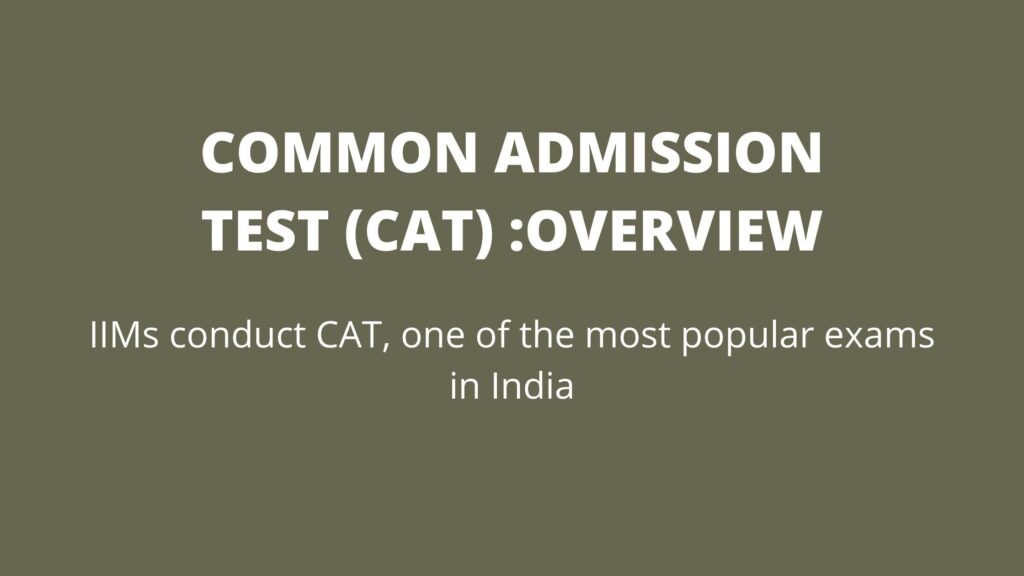About Common Admission Tests (CAT)
IIMs conduct CAT, one of the most popular exams in India, on a Sunday in the last week of November or in the first week of December. IIMs use CAT Score to shortlist students for the 2nd stage of the admission process, i.e. WAT ( Written Ability Test), and PI ( Personal Interview). Not only the IIMs but also other institutes use CAT scores for the shortlisting process.
In the last 5 years, several institutes have started online CAT preparatory programs to help students crack the CAT exam.
Common Admission Test (CAT) Numbers
The graph below shows the CAT applicants over the last 9 years
The number of CAT applicants had steadily risen to about 2.9 lac in 2008 before falling to 1.94 lac in 2013. After 2013, the number of CAT applicants has witnessed a steady increase in the last 6 years to around 2.44 lac.
Common Admission Test (CAT) : History
Before 2009, IIMs used to conduct CAT as a paper-based test on a single day for all the candidates. Initially, IIMs hired Prometric- an American firm to conduct the test; But, after the initial failure of Prometric, IIMs hired Tata Consultancy Services (TCS) to conduct the CAT exam. TCS has successfully conducted the CAT exam since 2015. Normally, the CAT exam could be divided into 3 different eras – Before 1999, 1999 to 2009 and post-2009.
Before 1999, CAT used to have 4 sections with around 40 to 50 questions in each section. The sections used to be English Usage, Reading Comprehension, Quantitative Aptitude and Data Interpretation and Reasoning.
In 1999 CAT, for the first time had three sections, instead of 4. The two sections of English Usage and Reading Comprehension had been merged into one. Moreover, the total number of questions had been reduced from around 200 to 150.
After 2009, CAT became a Computer Based test with the number of questions being reduced to around 100. The least number of questions asked in CAT in any year was 60 in the years 2010 to 2013.
CAT is an unpredictable exam. The question types, patterns, number of questions, number of sections kept on changing over the years. But since 2015, the CAT pattern has not changed. It has remained the same: 100 question and 3 sections.
Common Admission Test (CAT): Eligibility
Any graduate from a recognised university with at least 50% marks ( 45% for reserved category) can write CAT. Students in the final year can also write CAT, but their admission is subject to meeting the above percentage criteria. More details on the criteria can be looked at on www.iimcat.ac.in the CAT portal.
About the Test
The test pattern is not fixed. But, in the last 5 years, the pattern has not changed. It has remained a 3 section, 100 questions 3 hour test with 1 hour fixed for each section. The three sections are
- Verbal Ability and Reading Comprehension- 34 Questions – One hour
- Data Interpretation and Logical Reasoning – 32 Questions – One hour
- Quantitative Ability- 34 Questions – One hour
The total duration of the test is 3 hours. More on the test pattern in another article.
Total Seats
The seats in different IIMs vary. Obviously, the older and the more established IIMs have more seats as compared to the relatively new IIMs. The seats to the postgraduate courses of different IIMs vary from 550 at IIM Indore to around 45 in IIM Jammu. All put together, IIMs have a total of around 4300 seats. These include the reserved and unreserved category seats.
Course fee for the Postgraduate programs at IIMs
The fee also varies from IIM to IIM. Again the range of fee payable for IIMs is from around 10 lac for the whole course to around 22 lac for the whole course. Again, the more established IIMs – IIM Ahmedabad, Bangalore, Kolkata lead the pack at 22 lac, 21 lac and 21 lac respectively.
Click here to check out the CAT online training programs provided by us. Our Programs provide both synchronous and blended training to maximise your chances of success.

